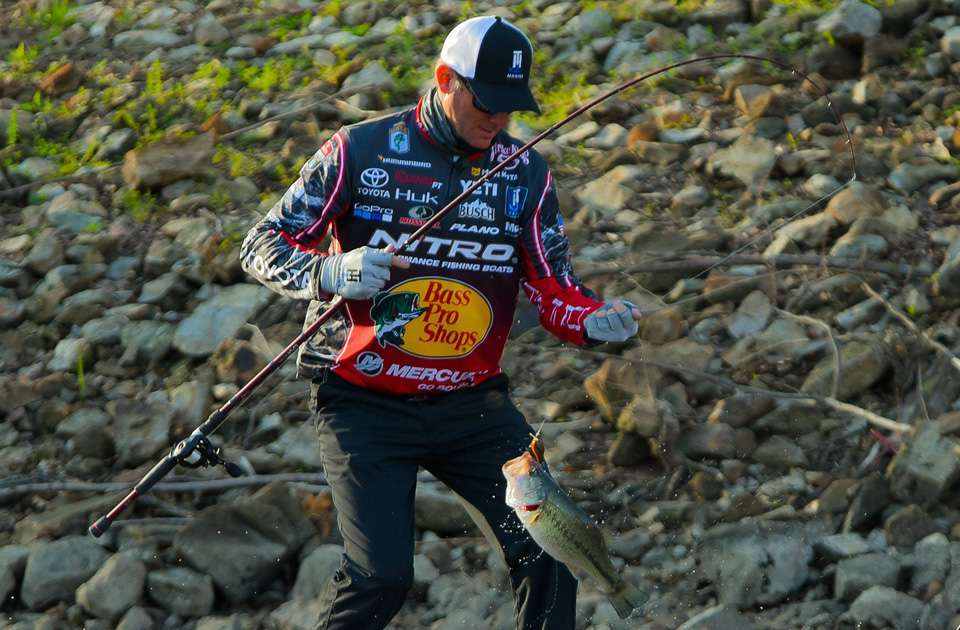
Squarebill crankbaits continue to gain popularity and for good reason – they flat catch fish.
Initially, anglers categorized these diving plugs as baits for fishing dirty, shallow water and around heavy cover.
We’ve learned they are far more versatile than that and work well in different types of cover and throughout the season, including early and late in the year.
The reason? The erratic action that causes a squarebill crankbait to work left and right and deflect wildly off cover will trigger bites in all types of conditions.
They work in clear water as well as dirty water and around grass as well as they do rocks and wood. In fact, they can be deadly in open water when fishing off the bottom or away from cover.
You will always find me with one or two sizes tied on just about every time I go fishing. Since Strike King introduced the original KVD 1.5 Square Bill, more sizes have been added and more are in the planning stages. We have the 1.0 which is a smaller profile than the 1.5, the 1.5 shallow, the 2.5, the 8.0 and this year, we added the 4.0 that dives to about 10 feet.
Of course, multiple sizes and colors can be somewhat confusing to an angler, regardless of the brand he uses.
You can simplify your choices by factoring in water clarity, water depth and size of the fish you’re targeting.
In most situations, the deeper the water the deeper you want the bait to run so that it can deflect off the cover and get you that reaction strike that squarebills are known for.
If the water is clear I’m going to choose lures that closely match the forage. Whereas shad are generally the primary forage in reservoirs, there are times when the bass are dialed into crawfish, especially around hard or rocky bottoms, so crawfish colors will work better. In Michigan, the bluegill is the primary forage so I will use colors that replicate the bluegill population.
But that doesn’t mean one color that resembles particular forage is always best. For example, in clear water, forage will be colored to blend in with their natural environment. So, bluegill around a milfoil bed will take on that greenish hue. Or if you’re fishing rocks or gravel on a clear lake where the rocks are brownish-colored, the crawfish will have more of a green pumpkin look to them. That’s what I want to imitate.
Colors aren’t nearly as important in dirty water, although the black and chartreuse color is a good place to start and one of my favorites.
Lure profile is equally important. I want my lure body to come close to matching that of the most available baitfish. If the lake is loaded with big gizzard shad and is known for its big bass, I want a bigger bodied bait like the 8.0. If fishing a Michigan lake where two pounders dominate, I will fish a smaller size of squarebill, like the 1.5.
So, the point is to open your mind to squarebill possibilities, match your lure size and color to the conditions in a given lake and put a square bill crankbait to work for you. You may also find you’re like me – you always have one tied on!
Remember, it’s all about the attitude!

